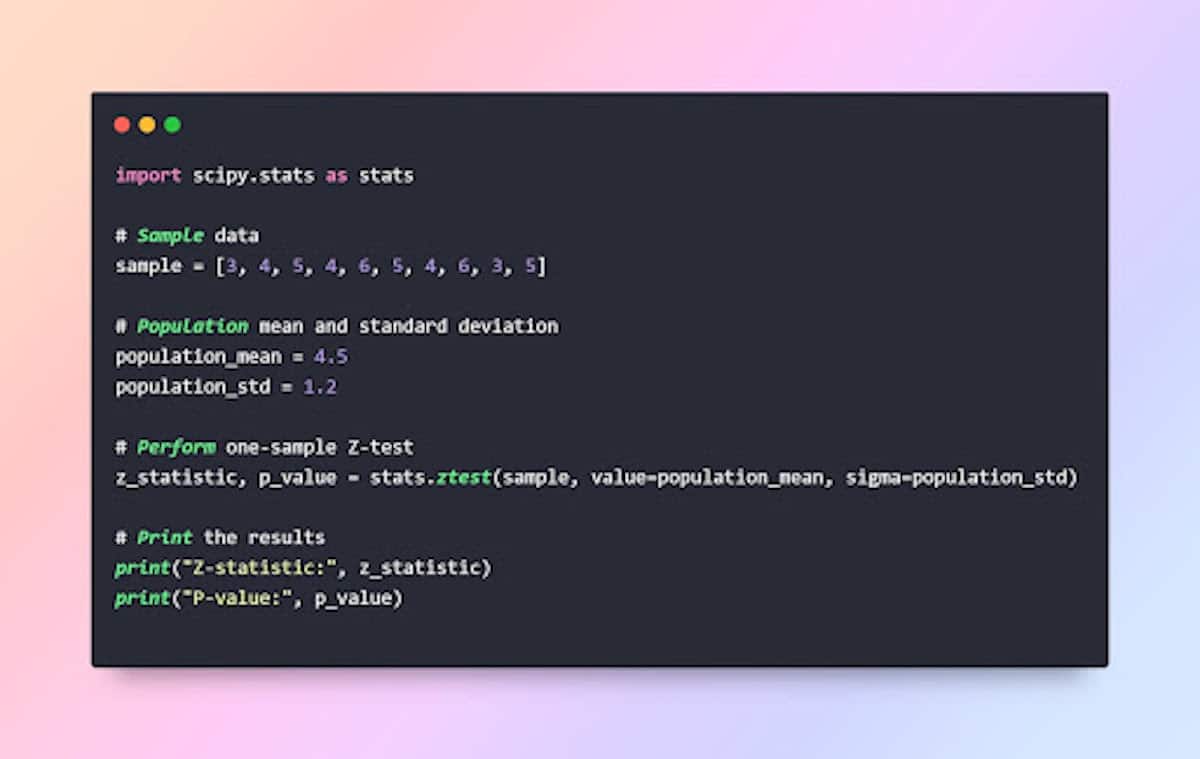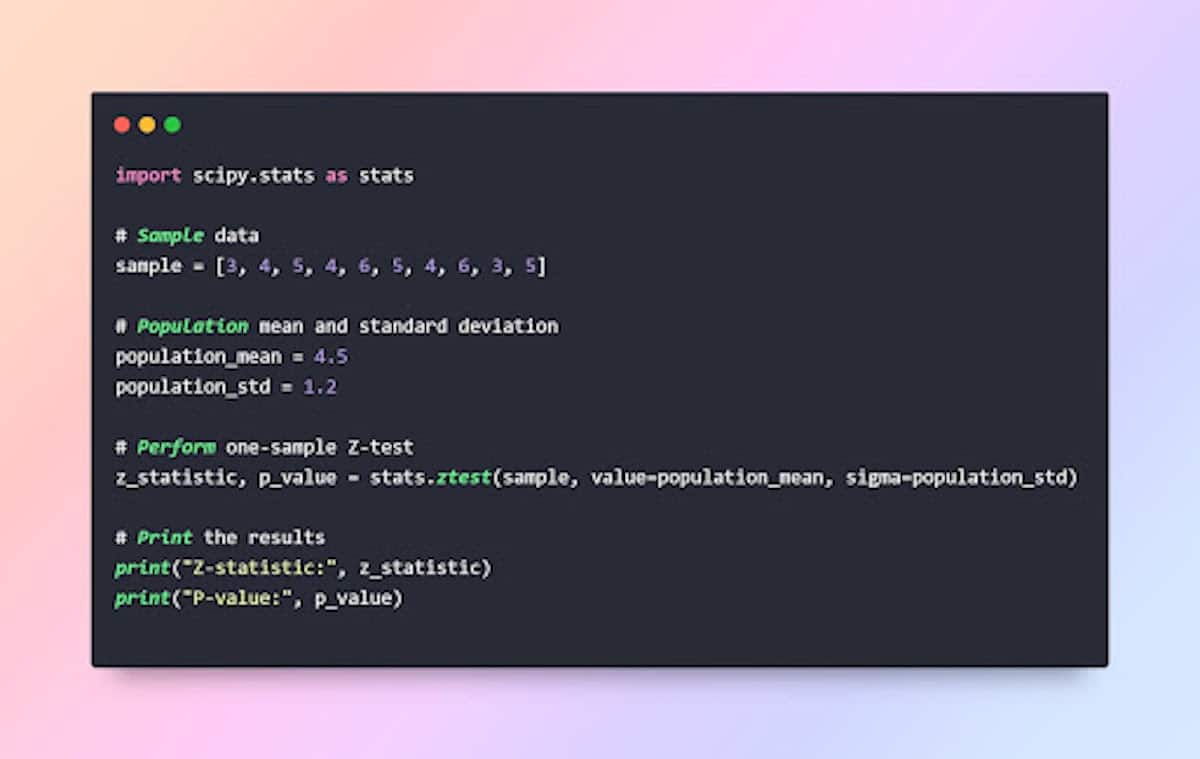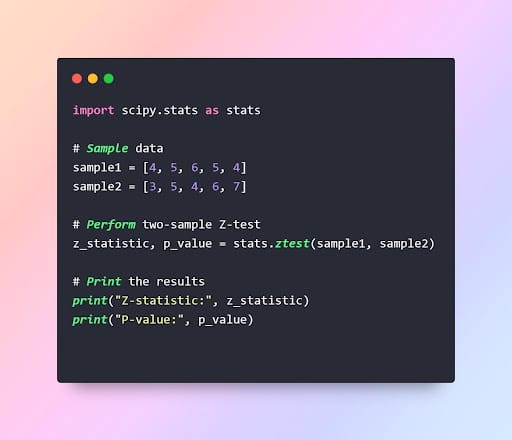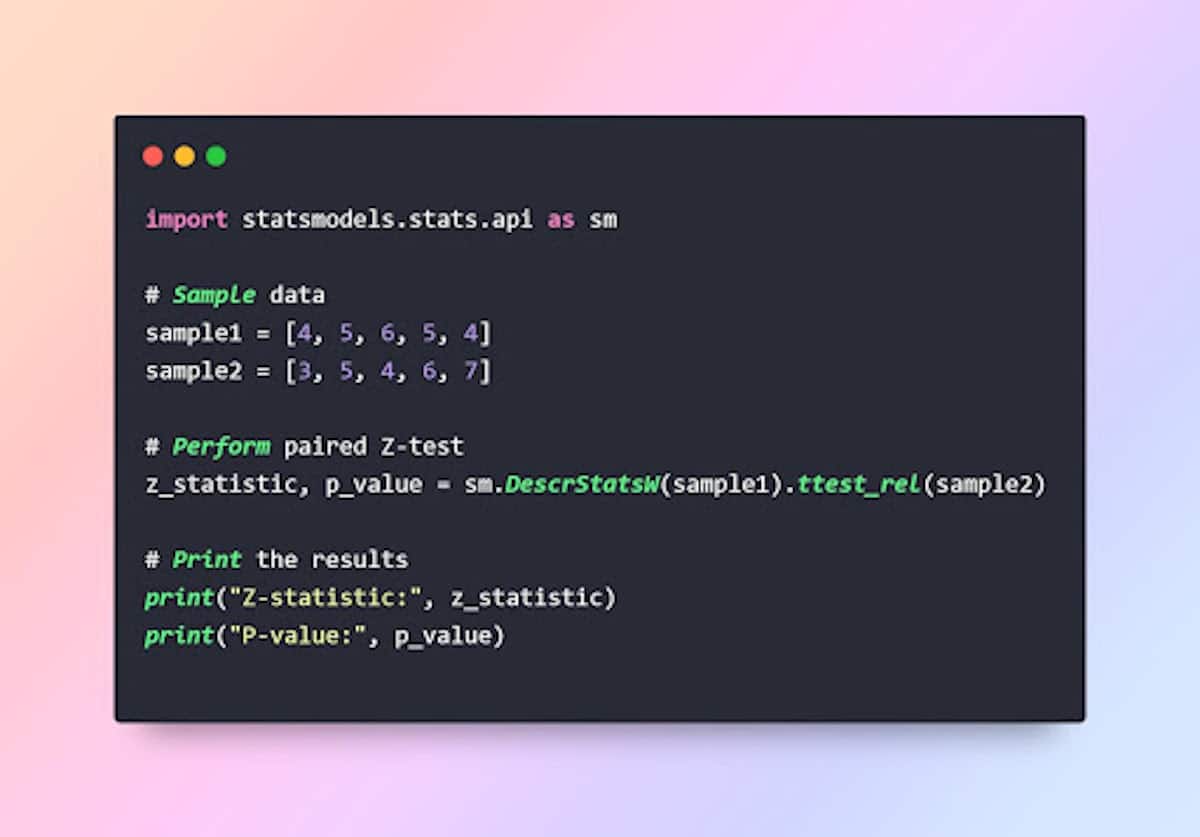In statistics, a Z-test is a hypothesis test that is used to determine whether the mean of a sample is significantly different from a known population mean when the population standard deviation is known. It is typically used when the sample size is large (n > 30) or when the population standard deviation is known.
In Python, you can perform a Z-test using statistical libraries such as SciPy or statsmodels. Here’s an example of how to conduct a Z-test in Python using the SciPy library:

In this example, we have a sample of values stored in the sample list. We assume that the population mean is 4.5 and the population standard deviation is 1.2. The Z-test function from SciPy’s stats module is then used to calculate the Z-statistic and the p-value.
The Z-statistic represents the number of standard deviations the sample mean is away from the population mean. The p-value indicates the probability of observing the given sample mean under the null hypothesis that the population mean is equal to the provided value.
You can interpret the results by comparing the p-value to a significance level (e.g., 0.05). If the p-value is less than the significance level, you reject the null hypothesis and conclude that the sample mean is significantly different from the population mean.
Implementations of Z-test in Python
A Z-test in Python can be performed when you have a sample dataset and want to test if the sample mean is significantly different from a known population mean, assuming you know the population standard deviation.
The implementation of a Z-test in Python typically involves using statistical libraries such as SciPy or statsmodels. Here are some common use cases and implementations of the Z-test in Python:
One-Sample Z-Test:
- Use case: Testing if a sample mean is significantly different from a known population mean.
- Implementation using SciPy:

Two-Sample Z-Test:
- Use case: Comparing the means of two independent samples to test if they are significantly different.
- Implementation using SciPy:

Paired Z-Test:
- Use case: Testing if the means of two related samples are significantly different.
- Implementation using statsmodels:

These are just a few examples of implementing Z-tests in Python using different libraries. The specific implementation may vary based on your dataset and requirements.


